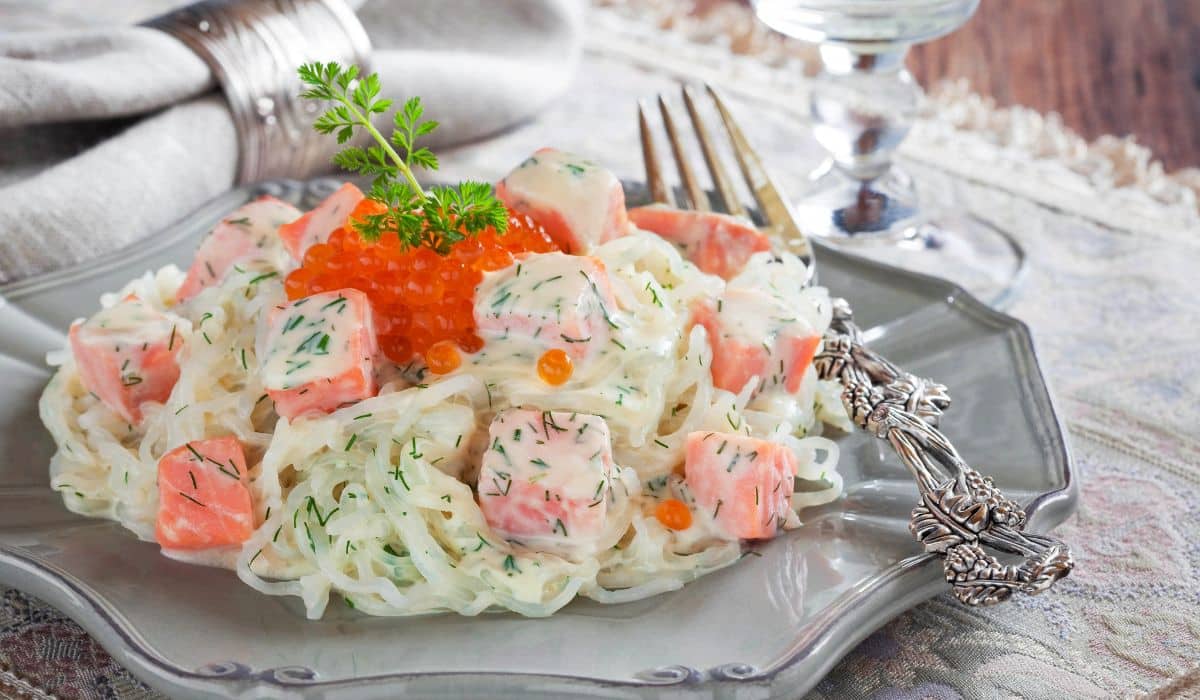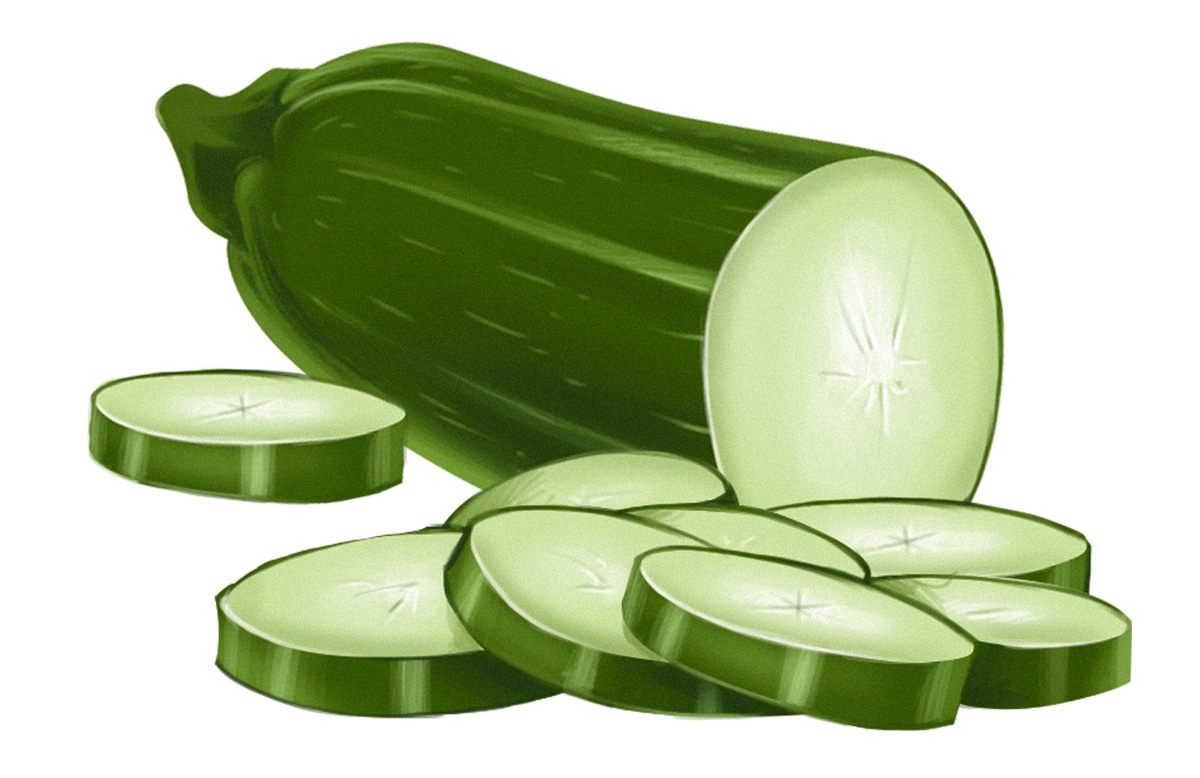
Shirataki noodles are popular for one big reason: calories. Some brands have 0 calories; others have 5 or 10 for a great big serving, so basically 0. Calorie-counting dieters love them because even a big, satisfying serving won’t break right through their daily calorie limit. Some low-carb and grain-free dieters also eat them as a grain-free noodle substitute without a bunch of wheat or rice flour.
There are also some health claims about cholesterol and stuff, but let’s be honest: 90% of the draw is the idea of getting enough noodles to fill up on without any carbs/calories. Most people want to eat satisfying meals that make them feel full without doing emotionally fraught calorie math at every meal, and a big pile of 0-calorie food lets you do that without worrying or guilt. That’s normal and understandable!
But “low-calorie” and “Paleo” aren’t the same thing. Lots of low-calorie foods aren’t healthy or Paleo (lite Miracle Whip, for example) and lots of healthy Paleo foods are fairly high in calories (e.g., olive oil, avocados, and nuts).
For more on calorie-counting and Paleo, here’s a full explainer - but for Shirataki noodles specifically, buckle up for a deep dive into some research.
What are shirataki noodles, again?
They’re mostly made of water and konjac glucomannan, a type of fiber. Konjac glucomannan comes from the root of a plant, Amorphophallus konjac, which is native to Asia. This same plant has a lot of names (including the evocative Devil's Tongue), and the water-fiber mixture also has many names including konnyaku and konjaku, so don’t be scared off if you see a spelling variation on the package.
Some types of 0-calorie noodles are made from all kinds of non-Paleo ingredients other than konjac, most notably soy - always check the ingredients list! The below only applies to noodles with a Paleo-approved ingredients where konjac is the “questionable” thing.
Konjac glucomannan is a viscous soluble fiber - that’s the type of fiber that forms a gel in the intestines once it comes into contact with water. Other foods high in viscous fiber include oats and psyllium husk (a common source of fiber in laxatives). Konjac glucomannan is one of the most viscous fiber types we know of - and yes, there is at least some evidence that it works for constipation on a low-fiber diet.
In that sense, there’s no reason why konjac glucomannan wouldn’t be a Paleo-friendly ingredient - it’s basically a fiber supplement in noodle form. (You can even buy it as a pure fiber supplement a la metamucil, but that definitely wouldn’t make a tasty side dish.)
OK, but how do these things taste?
As for the taste, it takes a bit of getting used to. Shirataki noodles aren’t at all like traditional Italian pasta. They wouldn’t go well with marinara and a big pile of meatballs; the texture is all wrong. They’d be better in chicken soup, or with a lighter Asian-inspired topping like grilled chicken and spring onions. The texture could be charitably described as “chewy” and uncharitably as “slimey” and it’s really a personal preference whether you like them or not. They have almost no flavor of their own; if you want flavor in the finished dish, you'll have to put it there. Luckily, a bag will only run you about $3, so they’re cheap to try out.
Studies, studies, studies!
Shirataki noodles specifically
There aren’t a lot of studies on shirataki noodles specifically. Here’s one of the few - researchers gave people a meal with either 100% normal noodles, 50/50 split between konjac and normal noodles, or 100% konjac noodles. The meals were matched for volume, with the same physical bulk of food for everyone; only the calorie count was different. After the noodle meal, the subjects got to eat as many cookies as they wanted. After the 100% konjac meal, the subjects reported feeling hungrier, but they didn’t actually eat a larger number of cookies, so they had lower total calorie consumption overall.
Studies on konjac glucomannan
Konjac glucomannan is the fiber in shirataki noodles, and there have been some additional studies on it as an ingredient or additive outside just the noodles. The studies were small and limited, but bearing in mind their limitations, they’re at least encouraging:

In this study, the authors gave konjac glucomannan to 11 people with high blood pressure and type 2 diabetes. For 3 weeks, they either got control biscuits or special konjac glucomannan biscuits every day. At the end of the study, the subjects who ate the konjac biscuits had lower systolic blood pressure and a better ratio of total:HDL cholesterol, with no change in weight, blood sugar, or other cholesterol numbers.
In another study by the same authors, subjects got konjac biscuits (for a total of 8-13 grams of konjac fiber per day) or wheat bran biscuits. The ultimately found that total cholesterol, LDL cholesterol, total:HDL ratio, and LDL:HDL ratio all improved in the konjac biscuit group; body weight, blood sugar markers, and total HDL cholesterol didn’t change.
This study is interesting because it’s by a different group and it’s a bit bigger - 63 healthy men got 3.9 grams of konjac glucomannan or a placebo every day for 4 weeks. The konjac glucomannan group had lower levels of total and LDL cholesterol at the end, although their HDL, weight, and blood pressure didn’t change.
A more recent review also supported the role of konjac fiber generally in reducing cholesterol if eaten in the amount of roughly 3 grams per day or more. That’s a lot of konjac glucomannan and most people don’t want shirataki noodles every day, but at the very least, these studies suggest something positive.
Side effects in those studies tend towards the predictable consequences of eating too much fiber: bloating, gassiness, stomach rumbling, and digestive upset - this is likely to be the type of effect that really depends on each individual person’s fiber tolerance, so your mileage will probably vary.
Are they Paleo?
Konjac glucomannan seems to be more or less harmless, if your digestive system doesn’t go into active revolt at the prospect of that much fiber. Shirataki noodles without a bunch of soy and junk in them are basically noodle-shaped fiber supplements. Processed? Sure, in the way that all supplements are, but if fish oil supplements and probiotic supplements fall under the Paleo umbrella, this doesn't seem anything different.
On the one hand, deliberately choosing a food because it doesn’t contain any nutritional value (which is, after all, traditionally the point of food) is a weird. On the other hand, our whole food situation today is weird. For the first time in the history of the species, we have a problem with too much food instead of too little, and we’re all swamped with addictive junk food all the time. If it helps people to eat non-nutritional fiber supplement noodles the same way ex-smokers use nicotine gum - well, there are worse coping mechanisms and we could all do to have a bit of compassion for each other around our nutritional issues.
Non-Shirataki Alternatives

Grossed out by the whole concept? Gut can’t take that big of a fiber overload? Just can’t stand that strange chewy texture? Check out seven Paleo-friendly vegetable noodle alternatives for recipes like...
- Garlic shrimp with zucchini noodles
- Chicken chow mein
- Spaghetti squash with creamy mushroom sauce
- Roasted red pepper pasta
Got a favorite type of Paleo-friendly noodles? Do you eat Shirataki noodles or not? Let us know on Facebook or Twitter!





Leave a Reply